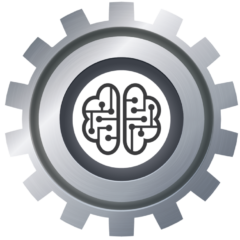Zettelkasten Method – Atomic Notes
In today’s fast-paced and information-rich world, note-taking has become an essential skill for many people. Whether you’re a student, a professional, or simply someone who wants to stay organized, taking effective notes is crucial for retaining information and making connections between different ideas. One approach that has gained popularity in recent years is the use of atomic notes.
I personally love the Zettelkasten Method. So much so, dedicating a podcast episode, creating an YouTube mini-series covering it, and utilize it with Notion. I hope these articles will get you interested in trying this awesome note taking method.
Atomic notes are a form of note-taking that emphasizes the importance of breaking down complex ideas into smaller, more manageable components. The term “atomic” refers to the idea that each note should focus on a single, discrete idea, much like an atom is the smallest unit of a chemical element. By breaking ideas down into atomic notes, you can create a more organized and easily searchable collection of information.
Here are some of the key benefits of using atomic notes:
- Better retention: By focusing on a single idea in each note, you can improve your ability to retain and recall information. This is because our brains are better able to process and remember small, discrete pieces of information, rather than larger and more complex ideas.
- Increased clarity: Atomic notes can help you to clarify your thoughts and ideas. When you break down complex concepts into smaller pieces, you are forced to think more deeply about each component, which can help to reveal new insights and connections.
- Better organization: Atomic notes can be organized more easily than larger and more complex notes. By breaking ideas down into discrete components, you can categorize them more effectively, making it easier to find and access information later on.
- Flexibility: Atomic notes can be used in a variety of contexts, from research and writing to personal organization and productivity. By focusing on a single idea in each note, you can adapt the method to suit your specific needs and goals.
So, how do you create atomic notes? Here are some tips to get you started:
- Focus on a single idea: Each note should focus on a single, discrete idea. This could be a quote, a fact, an observation, or any other small piece of information.
- Be concise: Atomic notes should be short and to the point. Aim to capture the essence of the idea in as few words as possible.
- Use clear language: Your notes should be written in clear, concise language that is easy to understand. Avoid using overly technical terms or jargon that may be difficult for others to understand.
- Categorize your notes: Once you have created your atomic notes, you can categorize them into different topics or themes. This will make it easier to find and access information later on.
- Make connections: Atomic notes can be linked together to create a network of ideas and associations. Look for connections between different notes and link them together to reveal new insights and relationships.
In Summary
Atomic notes are a powerful tool for anyone who wants to improve their note-taking skills and become more organized and efficient. By breaking down complex ideas into smaller, more manageable pieces, you can improve your retention, clarity, and organization, and create a more flexible and adaptable system for managing information. Whether you’re a student, a researcher, or a professional, atomic notes can help you to achieve your goals and stay on top of your work.
#infobymattcole
 You can check out Matt’s LinkedIn account, Youtube Channel, or Podcast.
You can check out Matt’s LinkedIn account, Youtube Channel, or Podcast.Introducing my new books, ‘The Art of Critical Thinking’ and ‘The Critical Thinking Model’. Both can be read for free with Kindle Unlimited or $2.99 each via Kindle.





